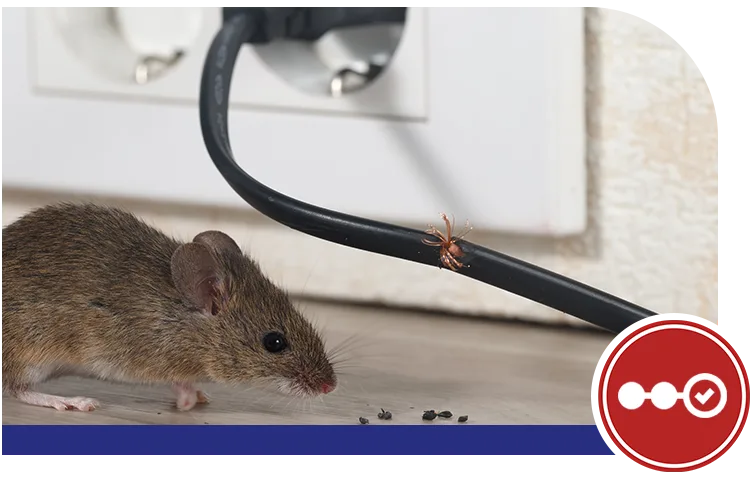Sign Of Rats
Rats have strong teeth that grow continuously, so they constantly gnaw on objects to keep them short. Look for gnaw marks on wood, wires, plastic, and even food packaging.
Rats build nests from soft materials like shredded paper, fabric, or insulation. These nests are usually found in secluded areas such as attics, basements, or inside walls.
Rats are nocturnal, so you may hear them moving around at night. Common sounds include scratching, scurrying, or squeaking, especially in walls, ceilings, or under floors.
If you actually see a rat, especially during the day, it could indicate a significant infestation, as rats are generally nocturnal and avoid being seen.
Rat droppings are small, dark, and pellet-shaped, about 1/2 to 3/4 of an inch long. You’ll often find them in areas where rats are active, such as near food sources, along walls, or in hidden corners.


Steps To
Control Rats
Controlling a rat infestation requires a combination of sanitation, exclusion, and elimination methods.
Our trained professionals will correctly identify the rat species,
as various varieties may require different treatment procedures.
We will thoroughly inspect your property to identify rat entry
points, hiding locations, and potential breeding areas.
Our professionals will utilize sophisticated ways to capture and
remove rats from your property while minimizing property
damage and preventing animal injury.
We provide continuing monitoring and treatment to ensure the
problem is fully treated and to prevent re-infestation.
Treatment Plan
We provide a reliable plan to remove pests and keep your space pest-free with regular, scheduled treatments. Customize a plan according to your requirements.
- 3 months, 6 months (Every month)
Treatment Methods
Controlling rats requires a comprehensive approach that targets both the rodents and their nesting sites. Here are the primary methods used by India pest control services providers to manage and eliminate rat infestations:
Snap traps are traditional traps that kill rats instantly. They’re effective when p
Anticoagulant Rodenticides are the most common and work by causing internal bleeding. They usually require several feedings and can take a few days to kill.
IPM involves using a combination of methods—sanitation, exclusion, traps, and chemical treatments—to manage rat populations in a sustainable way. Continuous Monitoring: Regularly inspect for signs of rats and adjust your treatment methods as needed.
Fumigation involves sealing off an area and filling it with toxic gases. This method is effective for severe infestations but requires professional handling and is not suitable for homes with pets or people present.
Maintaining a clean environment, free of food scraps and nesting materials, reduces the attractiveness of your home or yard to rats. Sealing entry points and making structural changes to deny rats access to buildings.



